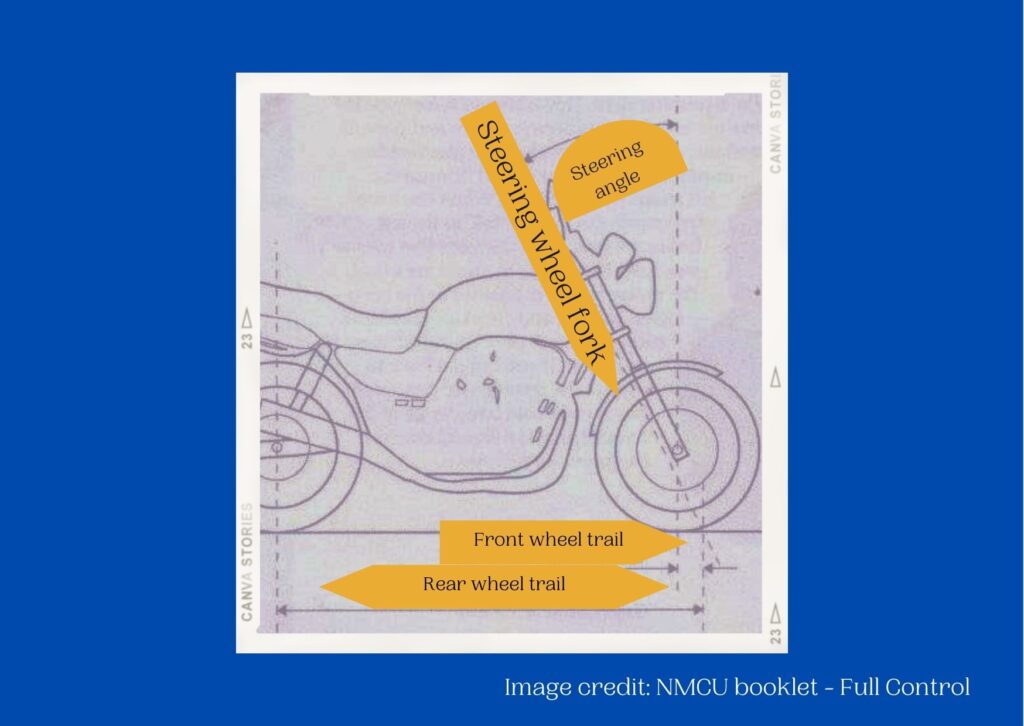
7 Top Motorcycle Accessories
With Christmas just around the corner, you might be wondering what to get your favourite motorcycle enthusiast or even a little something for yoursel...
 Phoenix Motorcycle Training LTD
Phoenix Motorcycle Training LTD
 Phoenix Motorcycle Training LTD
Phoenix Motorcycle Training LTD

If you’ve ever wondered how a motorcycle stays up or why it turns when it leans, this blog is for you. These motorcycle tips for beginners cover the basics of two-wheeled physics. Some may feel counterintuitive and others obvious. No matter which category they fall into, they’ll improve your understanding and contribute to making you a better, safer, rider.
Newton’s three laws of motion were discovered nearly 200 years before the motorcycle was invented. Understanding them, and how they apply to you as a motorcyclist can help you work with your machine and nature’s laws. You’ll be able to give precise commands that cooperate with your motorcycle and the forces keeping it moving and upright. Read on to become a better rider.
Your motorcycle has just two small contact points with the road through the tyres. When your motorcycle is moving, you’re actively moving the wheels under the mass centre of the bike. This keeps you and the motorcycle upright. If you’ve ridden a bicycle, it’s the same principle. And the muscle memory from riding a bicycle helps you naturally adjust your motorcycle’s mass centre as you move.
It’s a little like trying to balance a ruler upright in the palm of your hand. When the ruler starts to fall, you’ll naturally move your hand in the direction of the fall. This puts the mass of the ruler back over the contact point on your hand, restoring balance.
The effect of the motorcycle’s mass moving back over the contact points of the tyres increases with speed. That means a smaller adjustment is needed when you’re travelling at 30mph compared to walking speed.
Have you ever noticed that some motorcycles carry on in a seemingly stable direction even when the rider has come off? Or maybe you played ‘ghosty’ with your bicycle as a kid, seeing how far it would coast upright without you keeping it balanced. Along with Newton’s law of motion, the steering geometry of a motorcycle explains this phenomenon.
The oblique placement of your steering fork creates a situation known as ‘trail’. This is when the imaginary continuation of the forks to the ground lands a little ahead of the contact point of the front wheel. That trail leads the motorcycle. It creates an inherent balance and provides directional stability. The picture below illustrates this for you.

Remember Newton’s three laws of motion? His law of inertia tells us that any moving object will continue its trajectory if other forces don’t interrupt it. If an object is still, it will remain so until another force affects it.
When a motorcycle is travelling in a straight line, the mass of the bike is directly above the contact patches of the tyres. Gravity pulls straight down through those two contact patches of the tyres. The counterforce from the ground travels straight up. This enables the motorcycle to stay balanced.
Thanks to the angle of your handlebar forks working with Newton’s law, your front wheel falls in the same direction you lean your motorcycle. The shape of motorcycle tyres accentuates this. Its curved profile creates a longer circumference in the middle compared to the edge.
Imagine rolling a regular pint glass along a flat surface. The slightly wider drinking rim causes the glass to roll in an arc instead of a straight line. This is because the drinking edge is longer and rolls further than the narrower bottom with each turn.
When you lean your motorcycle, the same forces of gravity and the counter force from the ground impact your curved tyres differently.
Just as with the standard pint glass, your motorcycle tyre has a longer circumference in the middle to that of its edge. When leaned to the side, this causes the longer circumference to interact with the shorter outside. This naturally steers the bike in the same direction it is leaning toward.
Imagine you are leaning to the right on your motorcycle. You’ve created a force pushing to the right. This force acts on the contact points of the tyre and ground, pushing them out to the left. When the force pushing the motorcycle to the right and left are equal, they cancel each other out, enabling the bike to balance through a curve.
With balance and consistent speed, the motorcycle travels in a perfect arc, or part of an arc, without you needing to apply further pressure to the handlebars. Understanding this will help you master motorcycle turning techniques so you can take bends in the road, corners and swerve when needed easily.
One of the best motorcycle tips for beginners is to lean your bike in the direction you wish to turn. It may feel uncomfortable at first, but thanks to the way a motorcycle is made, and Newton’s laws, it’s absolutely necessary. It helps you maintain control and work with the natural tendencies of your machine.
Moving your body to lean your motorcycle is just one way to initiate a turn. But it’s not the most effective way. An easier and more efficient way to do this is to give a brief push on the side of the handlebars that you wish to turn. This technique saves time and effort. It also allows you to make faster and more precise turns.
It does this by moving the front contact patch of your motorcycle away from the direction of the rest of the bike. The motorcycle then pivots around its mass centre, leaning in the desired direction.
This steering technique is known as countersteering because you briefly steer in the opposite direction of your intended turn. It elegantly causes your motorcycle to lean in the direction you wish to go. That makes it far easier to lean the bike than trying to initiate a turn by shifting your weight. Countersteering can be used in any circumstance where you’re travelling faster than walking speed.
By leaning your motorcycle into turns, you’re working with the sideways forces of movement and gravity that pull the bike inward. When balanced against each other, they pull your motorcycle neatly through a turn. The oblique angle of your front forks, and the trail of the front wheel cause the wheel to straighten briefly after your short push to one side of the handlebars. They then turn into the curve with the motorcycle’s lean. It’s satisfyingly graceful.
Remember the faster you travel, the stronger the side and gravitational forces feel.
By practising countersteering consciously you’ll improve your steering. Eventually, this elegant method will become your natural steering technique. Making you a safer and more competent rider. In further blogs with motorcycle tips for beginners and seasoned riders, we’ll cover steering, acceleration and braking in more depth.
Understanding how your motorcycle behaves with the natural forces of physics means you’re able to work with them rather than combat them. Motorcyclists need to manage a demanding machine. Understanding the forces at play makes this far easier for both seasoned riders and new riders keen to improve. Check out more of our tips and guides to learn more about braking, accelearating and mastering the dark arts of motorcycling!

With Christmas just around the corner, you might be wondering what to get your favourite motorcycle enthusiast or even a little something for yoursel...

If you love motorcycle riding, you’ve probably daydreamed about riding a motorbike for a living. A professional racer or stunt rider is OK for some...

Getting a UK motorcycle licence can seem a complicated process. Particularly when compared to a driving licence for a car. Whether you choose the pro...
This website uses cookies to personalise content, ads, and analyse traffic, sharing data with partners who may combine it with other information. See our Privacy Policy for more information.